Tanzanite
Purplish blue to blue variety of Zoisite, the only orthorhombic member of the Epidote Group.
Tanzanite shop
Origin of name: named by the American jeweller Tiffany´s, after the African country of Tanzania, the only source of Tanzanite.
Around the turn of the 18th to the 19th century the Slovene entrepreneur, private scholar, geologist and avid mineral collector Sigmund Zois Baron von Edelstein sent two men to the Saualpe Mountain in the duchy of Carinthia, Austria, in search of minerals. One of them, a Simon Prešern, brought back an unknown mineral, which Zois christened Saualpite.
After Zois´ demise in 1819 in Ljubljana, Slovenia, the mineral was renamed Zoisite in the baron´s honour.
In 1967 the first gem quality Zoisite was found in Tanzania. Tiffany single-handedly advertised and marketed the new stone and within two decades made it America's most popular coloured gem after the big three, ruby, sapphire and emerald.
He did, however, find the phonetic proximity of the words "Zoisite" and "suicide" to be hampering his marketing efforts and thus renamed the stone once more.
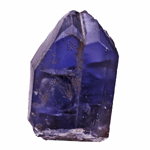
Rare twinned crystal of 25mm length. The upper part is clean and facettable
Can be confused with: Sapphire and Iolite. Moreover there is synthetic Forsterite which closely resembles Tanzanite but can easily be identified by its significantly higher refractive index.
Locations: Tanzanite is only found in the Merelani Hills in Tanzania.
Very rarely green specimens are found. These should be termed "green Zoisite" rather than "green Tanzanite".
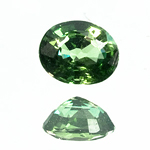
Equally rare are Tanzanite cat´s eyes.
Unfortunately we cannot show you a photo of a Tanzanite cat´s eye, because many years ago we were silly enough to sell the only specimen we ever had, thinking we would certainly be able to buy some more :-(
Non-gem-quality Zoisite is very common. Mindat.org lists 729 occurrences world wide, sixty of them in Austria alone.
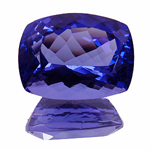
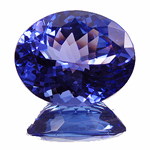
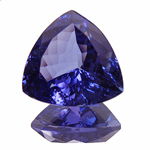
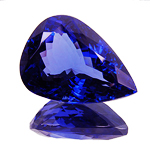
Facetted Tanzanites in various shapes.
The almost pure blue of the lower right pearshaped stone is the most expensive colour.
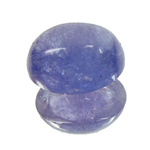
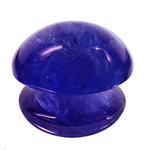
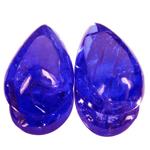
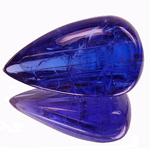
Tanzanite Cabochons and a dropshaped stone in various qualities
Treatment: untreated tanzanite shows a pronounced brownish tinge. Heating, either performed underground by Mother Nature or in a furnace by man, removes the unwanted brown while at the same time enhancing blue and purple. In the early days of tanzanite mining, when tanzanite could be found close to the surface, bush fires could do the same trick.
To produce the desired effect, relatively low temperatures of 350°C to 450°C suffice.
Handling: Tanzanite is heat-sensitive and does not react friendly to changes in temperature. Careful during soldering, cool down very gently! Heating to temperatures above 400°C can cause colour change.
Susceptible to acids.
Due to the perfect cleavage Tanzanite is also very sensitve to pressure.
Never ever clean Tanzanite ultrasonically!!
Worth knowing: read more about Tanzanite´s eventful history in these news articles:
2005: Tanzanite – a new strategy
2008: Tanzanite mine flood
2010: Tanzanite Rally?
2014: Tanzanite market in motion
 Deutsch
Deutsch